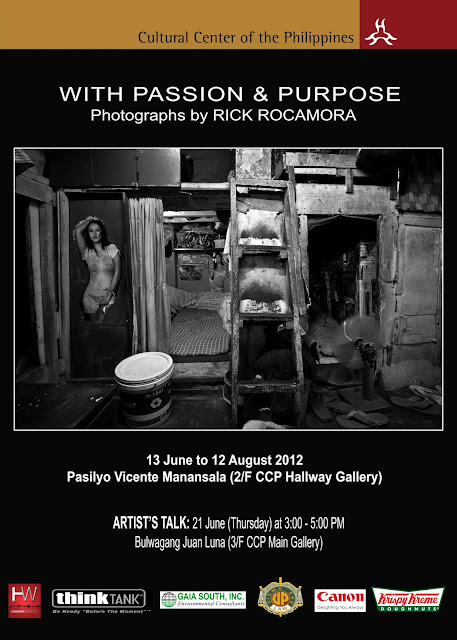Oro, Plata, Mata: Philippine Photojournalism As Seen Through The Lens of Ernie U. Sarmiento

Oro, Plata, Mata: Philippine Photojournalism
As Seen Through The Lens of Ernie U. Sarmiento
by Eric Caruncho
The Photographs
To see the world with new eyes…that has always been the dream.
A dream that seems more distant now more than ever.
Each day we are bombarded with a deluge of images: on the tube, on the streets, over the internet. Hundreds of frames per second flashing by, until all we see is a blur, and we are blinded by our own sight.
In such a world, the photographer's task is not to add to this never-ending stream of images, but to stop it—even for 1/100th of a second—so that we can see what they see. See the world with new eyes—their eyes.
In these images, gathered over a period spanning decades, photojournalist Ernie U. Sarmiento lends us his roving eyes, so that we might see the underlying meaning beneath the surface. His subjects range from the famous to the infamous, unfolding events of national importance to private unguarded moments of ordinary people.
What makes them remarkable is the fact that these are not "art" photographs taken by photographers with all the time in the world to wait for the right light, but "news" photographs taken in the heat of the moment, under deadline pressure with editors breathing down the photographer's neck.
These images were never meant to last beyond the next day's morning edition, yet here they are, years or even decades later, still seeming as fresh as the moment Ernie decided to press the shutter release.
It is a testament to the power that the single image still has to move us, and to the photographer's skill in making us stop for a moment, and see.
The Photographer
Some people are said to be born with a silver spoon in their mouths.
Ernie U. Sarmiento was born with silver nitrate and hypo solution running through his veins.
He was all of four years old when he first picked up a camera.
It belonged to his father Joe, a veteran lensman and Malacañang press photographer during the terms of Presidents Ramon Magsaysay and Diosdado Macapagal. Rather than scold his son for playing with his tools, Joe handed him a press ID and a reporter's notebook to complete the outfit.
Thus are photojournalists made.
As a boy Ernie apprenticed under his father, helping him with large-format camera setups, developing negatives and making enlargements in the family darkroom. Inevitably, he started taking his own photographs.
He wanted to study Journalism in college as well, but his father—knowing the hard life that Filipino photojournalists lead—prevailed upon him to study Engineering at the University of Sto. Tomas instead. But the fire had been lit: Ernie spent most of his free time at school taking photographs for the Varsitarian, the college newspaper.
Upon graduation, Ernie embarked on a photojournalism career in earnest, first with the Times Journal and later with the Philippine Daily Inquirer where he now heads the photo department. He has won numerous awards and prizes, among them Kodak Sports Photographer of 1988, Sports Photographer of 2002, and first, second and third prize in the MMDA Photo Contest. He also teaches Advanced News Photography at the Asian Center for Journalism of the Ateneo de Manila University.
In his 25 years as a professional photographer, Ernie has covered everything from war and politics to sports and human interest. But he still hews closely to the time-honored values of old-school photojournalism and the decisive moment:
"In photojournalism, the subject is the most important thing," he says "Photography is only a tool. What transforms simple photographs into pictures of lasting merit, comes down to the choice of subject… When choosing a subject, I look first if it has a story to tell; I look for content and meaning."
Oro, Plata, Mata: Philippine Photojournalism As Seen Through The Lens of Ernie U. Sarmiento will be on exhibit at Cinema Lobby, TriNoMa from September 17-24, 2008.
Visit Ernie Sarmiento's blog
Related article:


Comments